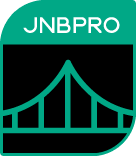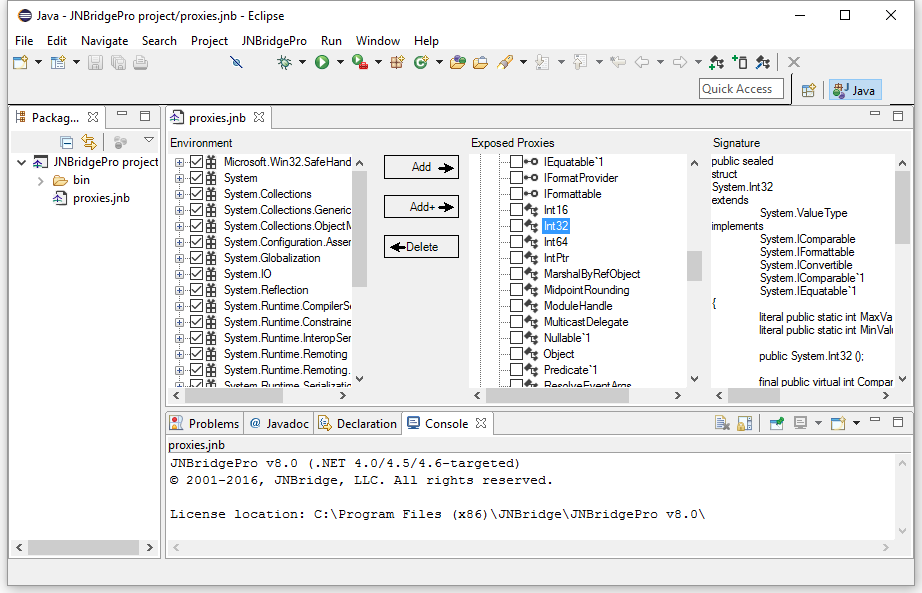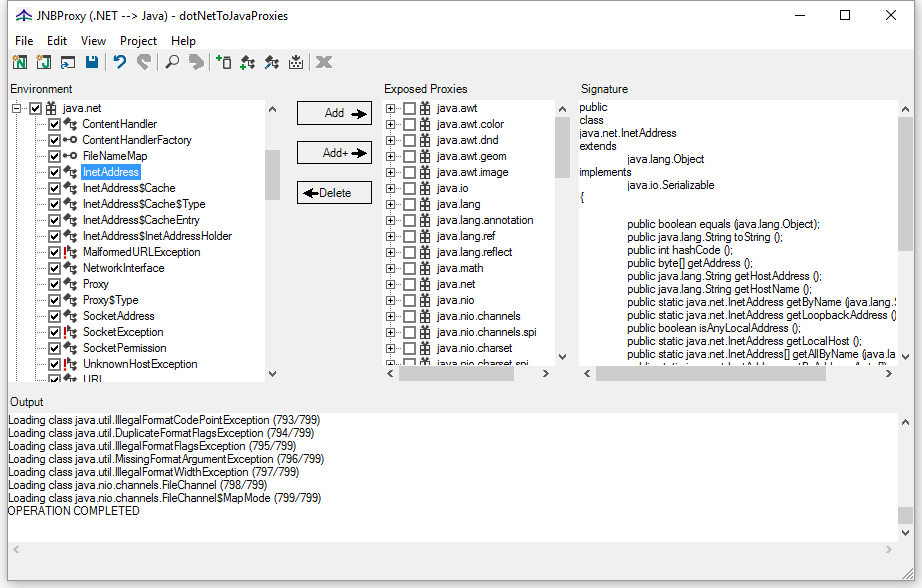Expose APIs in an IDE
Eclipse plug-in
![]()
Visual Studio plug-in
![]()
Standalone GUI
![]()
JNBridgePro creates the interoperability bridge by generating a set of proxies that expose the classes’ APIs and manage the communications between the .NET and Java classes.
You can explore Java or .NET classes (written in C#, VB, etc.) with the easy-to-use proxy generation plug-ins in Eclipse, Visual Studio, or the standalone JNBProxy GUI, and determine which classes should have their functionality exposed.
JNBridgePro automatically generates the proxies, and will optionally find and expose all the necessary supporting classes.
Access the Proxies
Once the proxies are generated, and you’ve added them to your current project, you can access the underlying .NET classes from Java (or Java classes from .NET, using C#, VB, etc).
Your calls to the code on the other side will look just like native, local code.
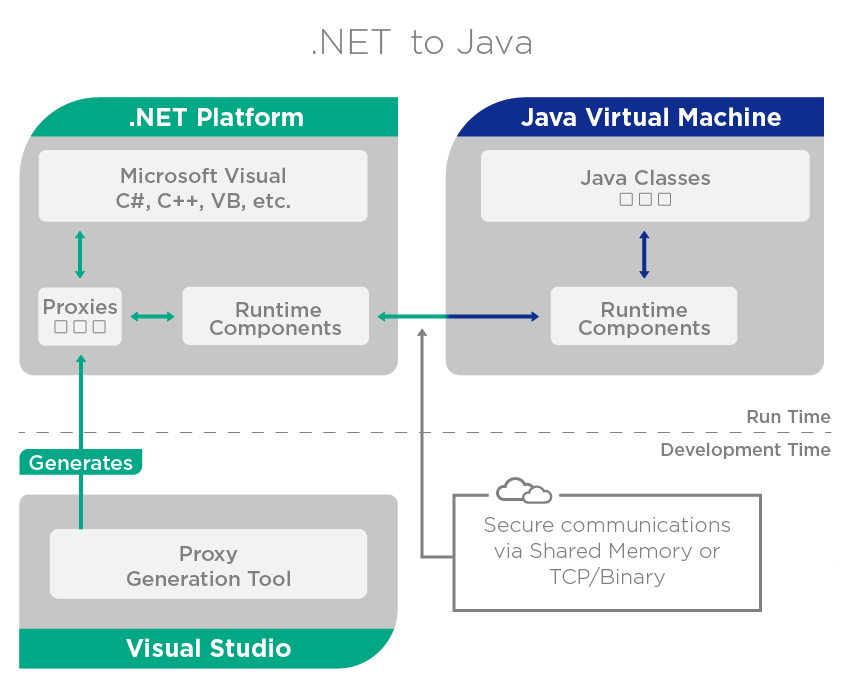
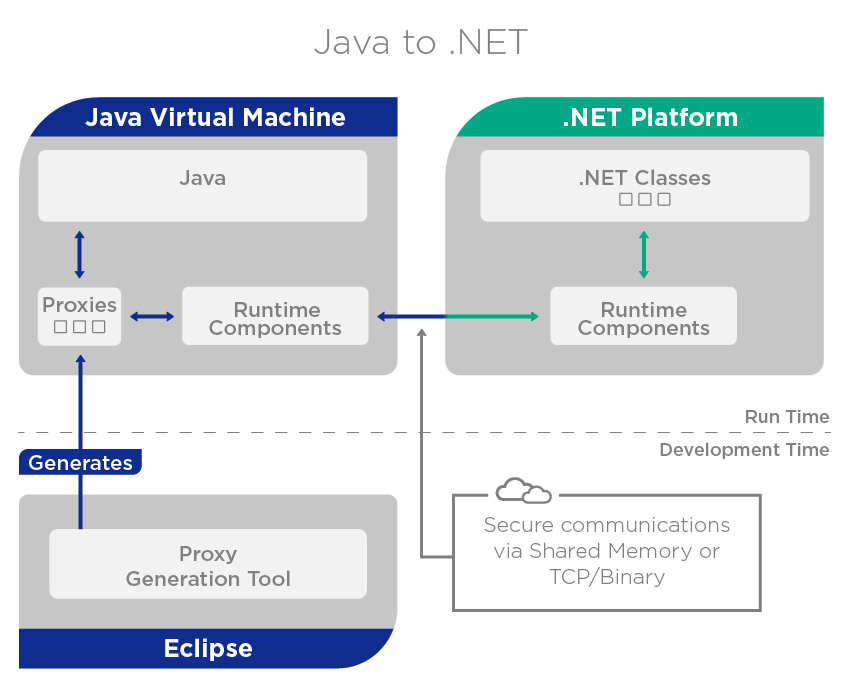
Deploy the Proxies
When deployed, the .NET classes communicate with the Java classes via your previously generated proxy classes, or vice versa. Written in any .NET language (C#, VB, F#, etc.), the .NET code runs in a .NET CLR (Common Language Runtime) on Windows or Linux, and the Java code runs in any conformant JVM (Java Virtual Machine).
Your deployed proxies can run on a real machine, or in a virtual machine or container.
JNBridgePro’s communications architecture gives you the choice of communication channels: a fast in-process shared-memory channel or a TCP/Binary protocol channel. With these channels you can easily construct distributed systems that can run on a wide variety of architectures, both on the ground and in the cloud.

